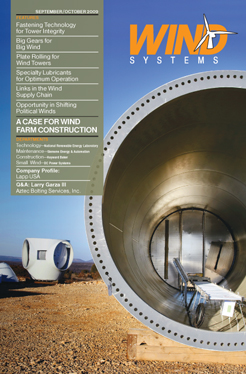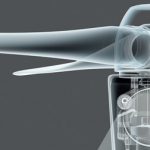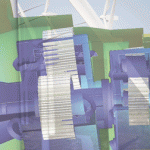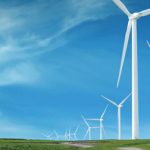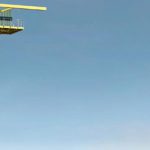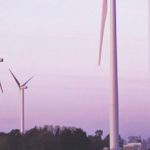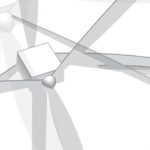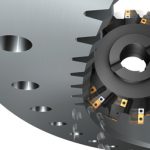When the American Clean Energy and Security Act was passed by the U.S. House of Representatives in late June, it was trumpeted as one of the biggest legislative victories of President Obama’s administration. It was also viewed as a huge win for the wind and solar industries, which together with a large coalition of supporters and many of America’s largest corporations, lobbied tirelessly for the new legislation. Under the legislation—which experts predict will be confirmed by the U.S.
Senate—electric utilities must secure 20 percent of their electricity demand through renewable energy sources and energy efficiency by 2020. Other key provisions of the bill include: $190 billion in new clean energy technologies and energy efficiency, including energy efficiency and renewable energy, and $90 billion in new investments by 2025; new energy-saving standards for buildings, appliances, and industry; and reduced carbon emissions from major U.S. sources by 17 percent by 2020, and over 80 percent by 2050 compared to 2005 levels.
With an influx of $90 billion in new investments poised to flood the wind and solar power industries within the next 15 years, it’s clear that the need for more cost-effective wind energy solutions is critical. After all, the investment in these industries will mean much more than simply the addition of several thousand wind turbines and solar panels to the American landscape.
So what exactly needs to happen in order for the goals of the American Clean Energy and Security Act to be met? For starters, technology must become more efficient, more dependable, and more effective in order to ease traditional utilities through the transition to renewable energy. My company and many others are already working to develop comprehensive solutions that refine the wind power technology available today. In particular, we are focusing its energy on four key areas of the customer experience: improved performance, enhanced durability, the introduction of scalable technology, and a comprehensive approach.
Improved Performance: Wind turbines usually come with an average $3 million price tag, making a positive return on investment paramount to wind energy producers. So it’s no wonder that wind turbine owners want their systems to run at peak efficiency, with as little downtime as possible. In addition, wind turbines have an average lifespan of 20 years, making it even more critical that they operate at maximum capacity as often as possible.
Progress has been made in this area due to variable-speed turbines that incorporate “smart” pitch and yaw drives. These smart drives are able to optimize harnessed power and prolong the life of wind turbines, thanks to an electronic controller that pinpoints the turbine’s power output several times per second and then calibrates it to the right speed to produce the most energy.
Enhanced Durability: When equipment must constantly operate at peak performance, the durability of individual components becomes a necessity. Preventing failure to wind turbine components—especially rotors, mechanical power train, and electrical generators—requires technology that can keep equipment up and running at all times.
Just as smart yaw and pitch drives can enhance wind turbine performance, they can also improve wind turbine durability and protect turbines from being pushed beyond their limits. This feature is especially helpful when wind gusts exceed 33 miles per hour, the typical speed that wind turbines are equipped to handle. This process allows the wind turbine to create the highest possible power output while maintaining optimal speed, despite high wind conditions. By removing the strain of high winds from the equation, wind farm owners and operators are saved the expense of repairing and/or replacing incapacitated turbines following high winds. This increased durability can also help extend the life of a wind turbine past its average lifetime of 20 years.
Scalable Technology: Twenty years ago, when the first utility-scale wind turbines were installed, they were only accessible to big players in the energy production game. The cost of harnessing wind energy was simply prohibitive to small to medium-sized utilities and plants. But as application engineers in the renewable energy industry have developed and refined new technologies, more cost-effective applications have emerged.
A Comprehensive Approach: The old saying, “The whole is greater than the sum of its parts,” is an ideal way to describe the current approach to wind energy production. We are developing comprehensive wind energy systems that are more reliable, more efficient, and therefore more valuable than the separate components themselves. Buying from a systems provider means that customers are buying the experience and the integrated thinking, not just a single part.
Opportunities for Improvement
Increasing wind turbine performance is just one of several ways the goals of the American Clean Energy and Security Act will be met. A few other key factors the wind power industry must take into consideration during the transition to renewable energy sources include:
• Increasing the lifecycles of wind turbines by manufacturing more simple and reliable internal components;
• Developing a national super grid capable of storing wind energy and delivering it efficiency from the sparsely populated areas where it is gathered to more densely populated areas where it is most needed;
• Helping energy regulators, legislators and energy delivery companies create an atmosphere of cooperation that rewards new and innovative ways to deliver larger amounts of wind-generated energy into the system;
• Mass-producing turbines to reduce their cost below the current price;
• Making the harnessing of wind energy an international priority in which corporations, researchers, and individuals build on each other’s successes;
• Protecting wind power’s position as an environmentally friendly energy option by seizing all opportunities for improvement, and;
• Finding ways to extract more energy from the wind, beyond the 80 percent of the theoretical maximum that most current designs currently obtain.
The Future of Wind Energy
As I’ve mentioned, the next 15 years or so will be especially exciting, as new breakthroughs and new legislation propel wind energy into the mainstream. But without continued innovation, hard work, cooperation, and financial investment the full potential of wind power can never be realized.
Much of that challenge will be met by increasing the performance of wind turbines, by achieving greater dependability of turbine components, improving efficiency and building on recent technological advances—an effort that many of us are already deeply engaged in, and we will continue to invest in. The renewable energy sector as a whole has worked to achieve advances that make wind power viable and the world’s fastest-growing energy source, and it will continue to push the limits of today’s technologies and solutions, making the next generation of equipment even better.



















